2024年5月,南京财经大学食品科学与工程学院汤晓智教授课题组在期刊Food Hydrocolloids(Q1,IF: 11)发表题为“Performance enhancing of saturated fatty acids with various carbon chain lengths on the structures and properties of zein films in alkaline solvents”的研究性论文。
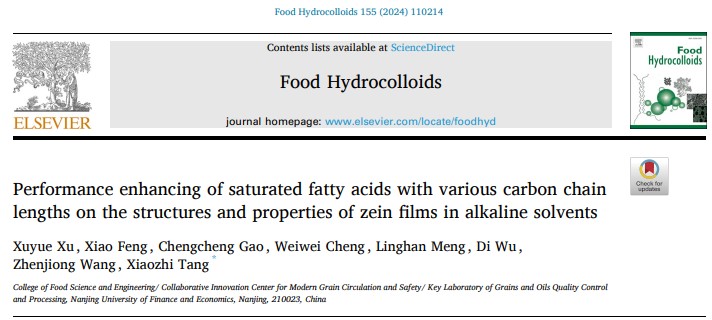
本研究以氢氧化钾碱性溶剂溶解玉米醇溶蛋白,并通过添加不同碳链长度的饱和脂肪酸(即癸酸、月桂酸、棕榈酸),以评估脂肪酸和甘油对碱溶解体系中玉米醇溶蛋白膜的塑化与性能提升作用。首先将玉米醇溶蛋白溶于碱性溶剂中,然后在50℃下加入脂肪酸并搅拌使其溶解,最后加入甘油,得到均匀的成膜液。通过浇铸法成膜后,对膜中玉米醇溶蛋白的相对脱酰胺程度、结构和性能进行了相关表征。该研究摒弃了关于玉米醇溶白膜报道中最常见的有机溶剂溶解法,为深入了解玉米醇溶蛋白塑化、开发无有机溶剂食品包装提供参考。
研究亮点
1. 玉米醇溶蛋白膜是溶解在碱溶液中后通过浇铸法制备的。
2. 脂肪酸通过破坏玉米醇溶蛋白的分子间相互作用来阻止玉米醇溶蛋白的快速聚集。
3. 癸酸降低了玉米醇溶蛋白在碱性溶剂中的脱酰胺。
4. 在玉米醇溶蛋白中添加比例为1/15的癸酸或月桂酸可显著提高玉米醇溶蛋白膜的性能。
研究结论
由于在碱性溶剂中的脱酰胺反应,玉米醇溶蛋白的结晶度在成膜后降低。SEM、XRD和FTIR分析结果表明,脂肪酸和玉米醇溶蛋白之间的相互作用降低了蛋白质分子的有序度,增加了玉米醇溶蛋白与甘油和碱性溶剂的相容性。这有助于减少玉米醇溶蛋白在成膜过程中的聚集,从而使薄膜具有致密的微观结构。研究发现,添加比例为玉米醇溶蛋白重量1/15的癸酸或月桂酸,可以获得具备良好紫外线阻隔和可见光透射率,以及相对优异的机械和水蒸气阻隔性能的薄膜。这些信息将有助于减少使用有机溶剂开发玉米醇溶蛋白基的食品包装薄膜。
图文赏析
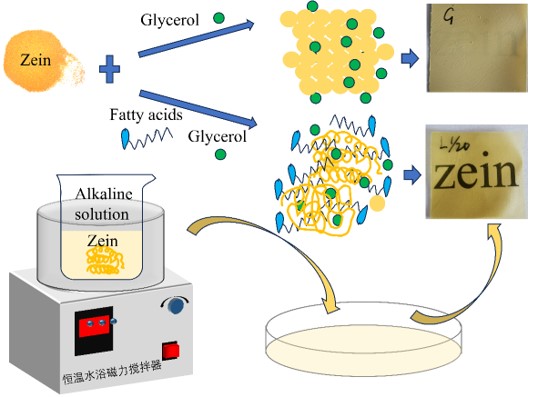
Figure 1 Schematic illustration for the zein films preparation.
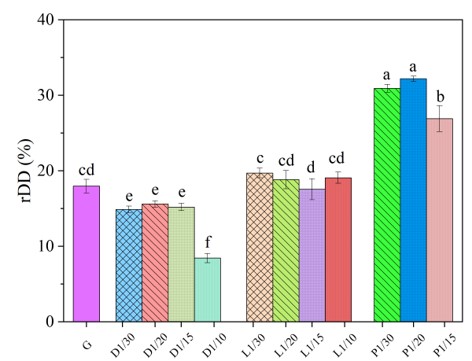
Figure 2 Relative deamidation degree of zein in films. D. L and P represent decanoic acid, lauric acid, and palmitic acid, respectively; and the number after the letter represents the ratio of fatty acids to zein. The content of glycerol in all membranes is 25% of zein, and G represents only glycerol.
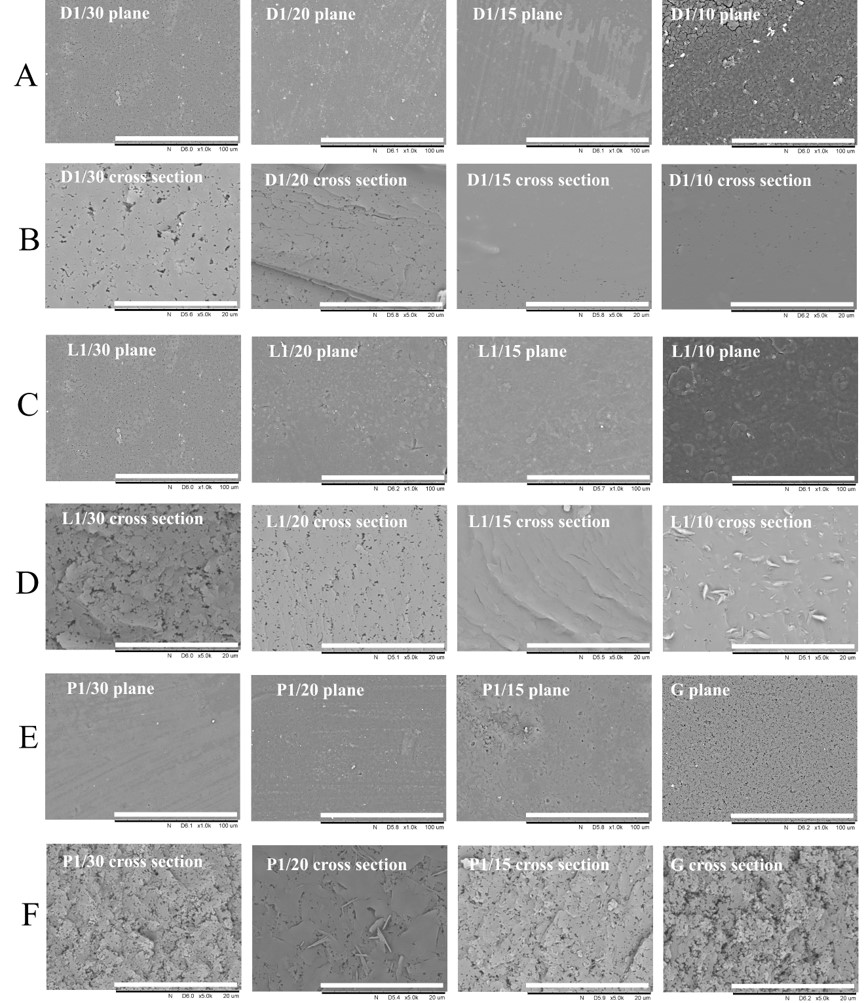
Figure 3 SEM images of planes (A, C, and E, × 1000, scale bar = 100 μm) and cross-sections (B, D, and F, × 5000, scale bar = 20 μm) of D-, L-, P-, and G-films.
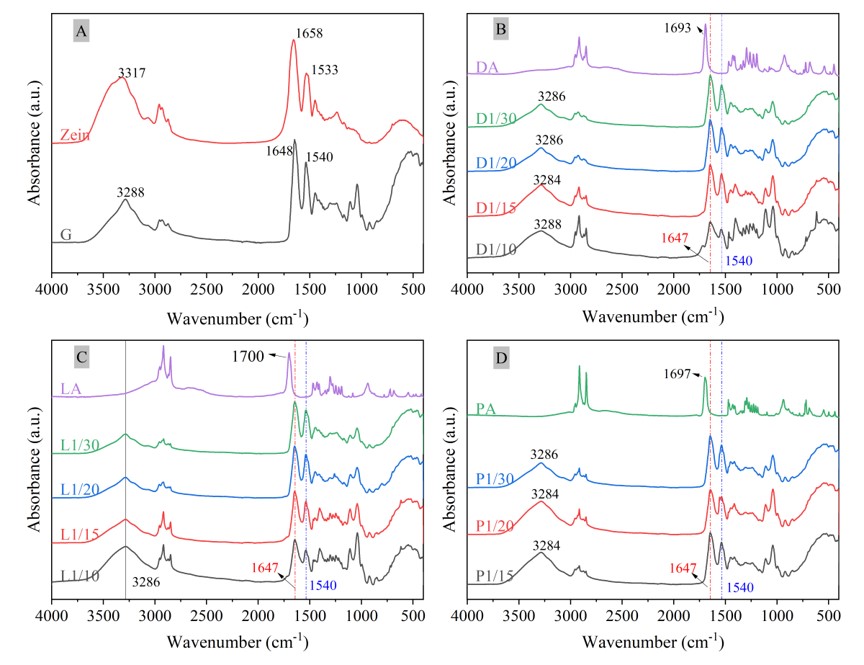
Figure 4 FTIR spectra of (A) Zein raw material and G-film, (B) DA and D-films, (C) LA and L-films, and (D) PA and P-films.
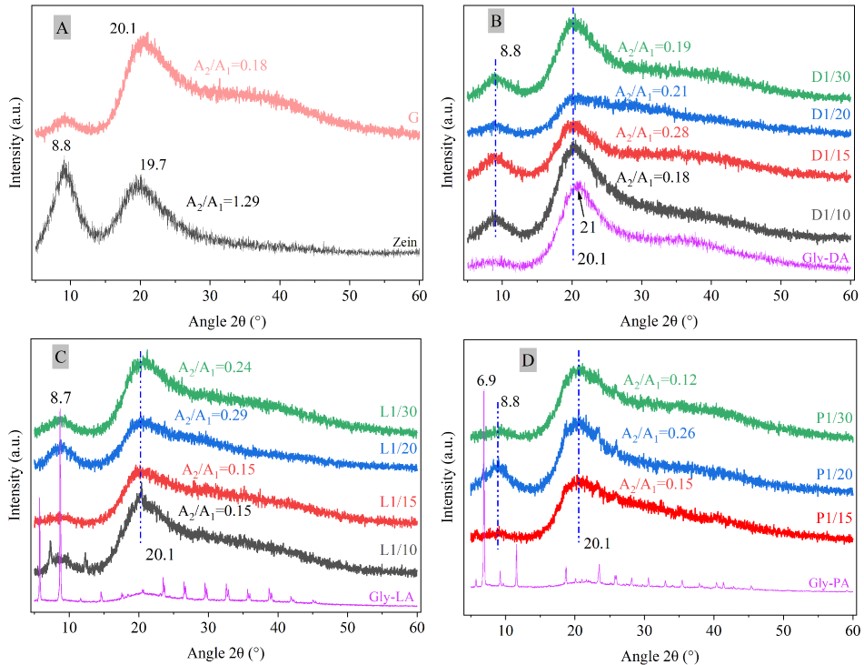
Figure 5 XRD patterns of (A) Zein raw material and G-film, (B) D-films, (C) L-films, and (D) P-films. Gly-DA, Gly-LA, and Gly-PA were dry mixtures that were consistent with the film-forming formulations of D1/15, L1/15, and P1/15, but do not contain zein. The A2/A1 was area ratios of 2θ = 8.8° (A2) and 2θ = 19.7–20.1° (A1).
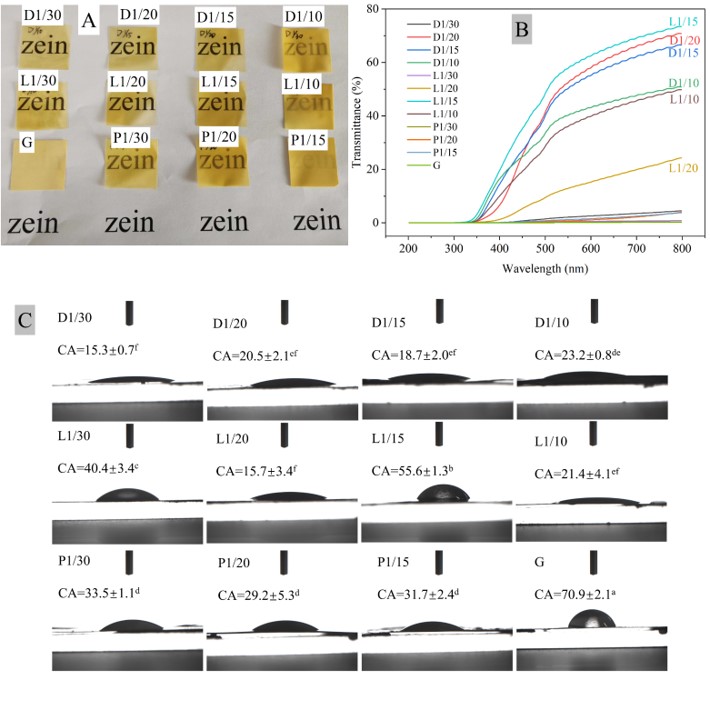
Figure 6 (A) Appearance, (B) light transmittance, and (C) contact angle of G-, D-, L-, P-films.
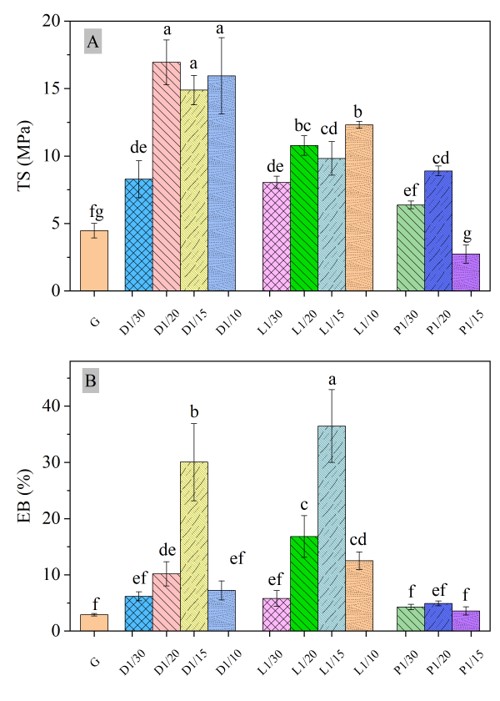
Figure 7 Tensile strength (A) and elongation at break (B) of G-, D-, L- and P-films.
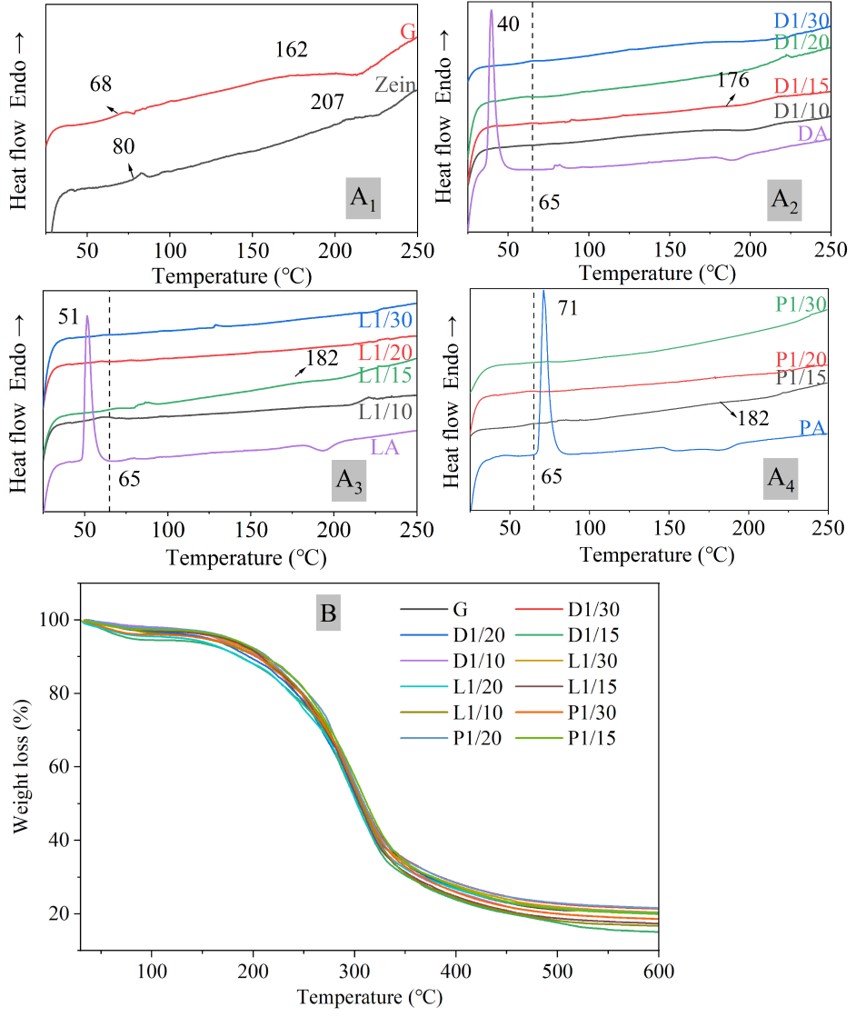
Figure 8 DSC curves of (A1) Zein raw material and G-film, (A2) DA and D-films, (A3) LA and L-films, A4) PA and P-films, and (B) TG ofG-, D-, L-, and P-films.
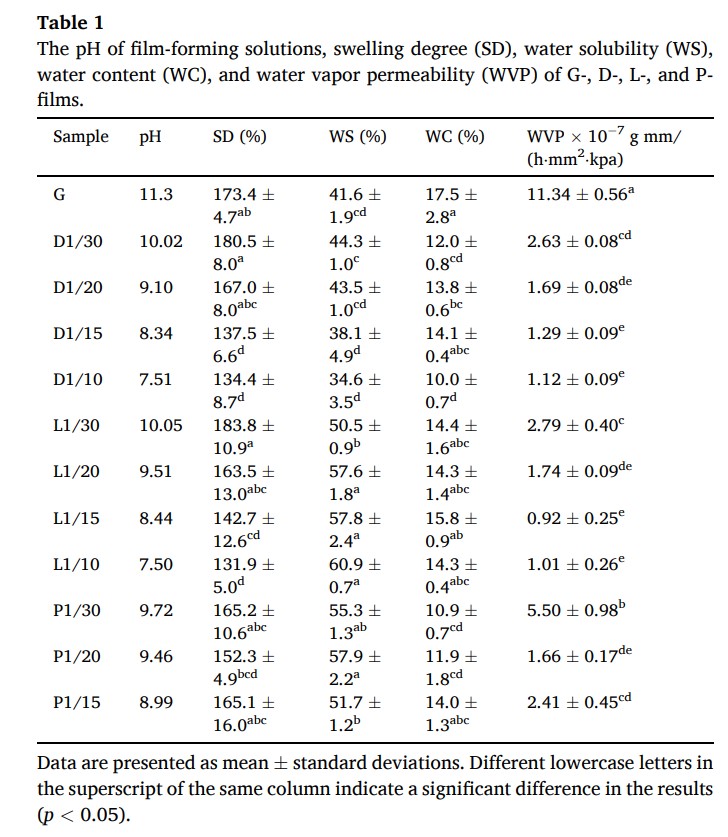
原文链接:https://doi.org/10.1016/j.foodhyd.2024.110214